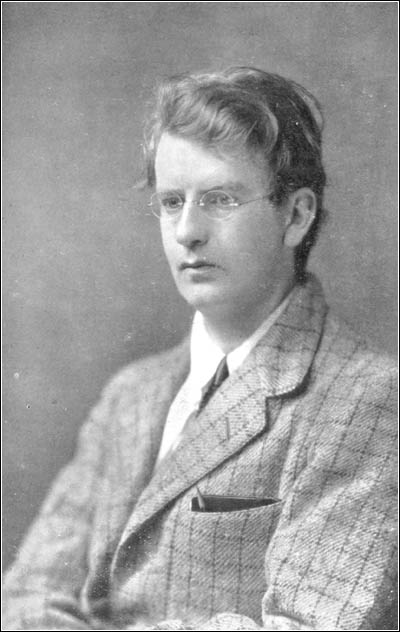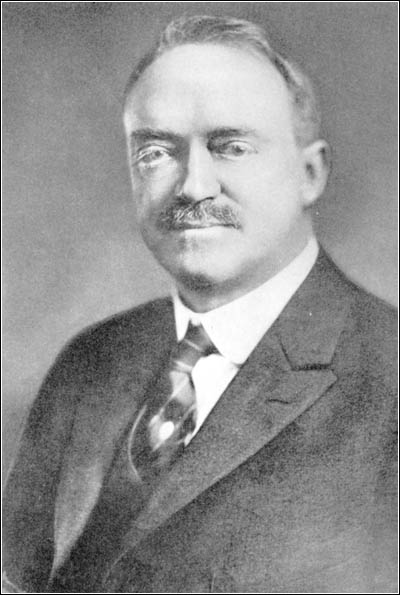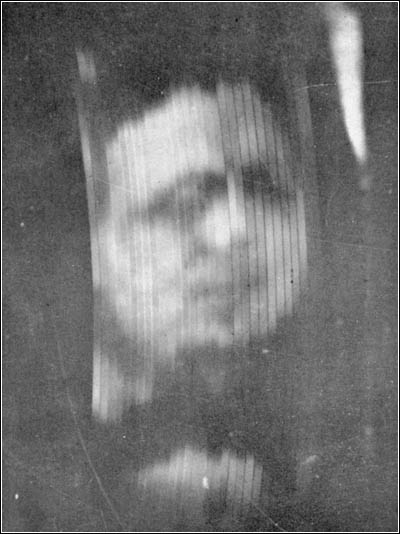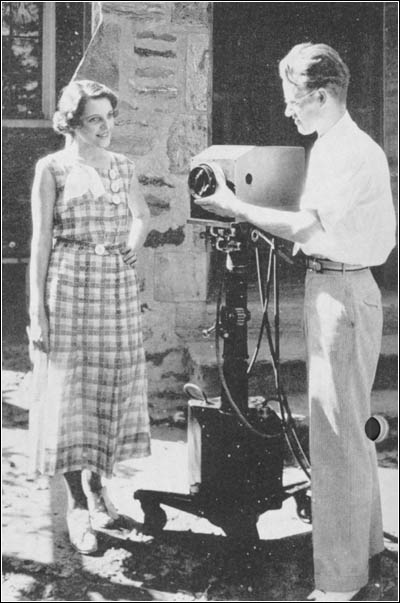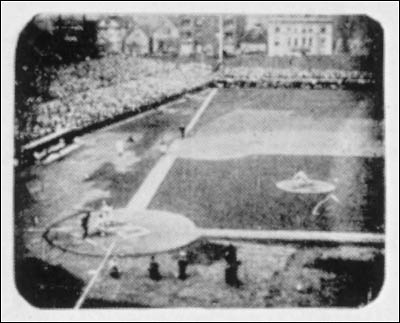Of Old Radios And Related Items--Published Monthly
Who Invented Television?
By Rex Newsome
Web Edition
The following is an edited version of an article by Rex Newsome originally published in "Radio Waves," the journal of the Historical Radio Society of Australia, in July 2004. We agreed with Rex that the discussion would reach a wider audience through A.R.C. We have augmented the article with period illustrations from my library. (Editor)
The question posed in my title was prompted by the review by Jeffrey Crocker of Daniel Stashower's The Boy Genius and the Mogul in the December 2003 issue of A.R.C. In England, the answer is usually John Logie Baird, but if you go to a web search-engine, such as Google, and type in "inventor of television," about half of the first 100 hits come up with Philo Farnsworth. However, a dig through history throws up a lot of other names, including Vladimir Zworykin, and Charles F. Jenkins. Baird receives most of the remaining references, Zworykin hardly gets a mention, and Jenkins is nowhere.
As always with heroes, it is a matter of how good the named person's cheering squad is. Farnsworth's squad seems far superior to those cheering for others. One factor is country of origin as the tendency is to cheer for someone of one's own nationality. Though in England the credit always seems to go to Baird, Campbell Swinton remains a forgotten entity, as is Jenkins in America. In Japan the name championed is Takayanagi, but since his work was in 1928, he was too late to rate outside Japan.
The Earliest Years
The first proposal that moving pictures might be transmitted and received by using a mosaic of light-sensitive selenium cells to decompose the picture for later reconstitution by electric lamps appears to have been made as early as 1875 by an American, George Carey. This was a rather remarkable proposal, considering that Edison had yet to perfect the light bulb. Others that took up the idea include Willoughby Smith and two Frenchmen, Senlacq and LeBlanc.
English scientist John Logie Baird who first demonstrated a method of transmitting and reproducing images in the 1920s. (From Dinsdale)In a 1908 issue of Nature, Bidwell proposed that a 90,000 wire cable might be used to convey pictures, and even perhaps in three colours. Arthur A. Campbell Swinton rejected the idea of having to use that enormous number of wires and suggested that the cathode ray oscilloscope, invented by Braun several years earlier, would be the only really practical way to display a received picture. In 1911, he outlined a plan for a complete system which proposed the use of electrostatic scanning both for a camera and a viewing screen. This, when combined with an idea suggested by Sinding-Larson in that year of using radio waves for the connection in between the camera and the receiver, set out the basic system for all modern telecasts.
The only thing lacking at that time in the Campbell Swinton system was a means of amplifying the signal at either end. The invention and exploitation of the properties of the triode valve filled in this gap. Volume III of the Harmsworth Wireless Encyclopedia of 1923 gives a more detailed development of the Campbell Swinton system, which, by then, included a two-valve transmitter and a three-valve receiver. No detail as to how synchronization was to be achieved is given, however.
The 1920s
So, where do Baird, Farnsworth, and others come in? Baird seems to have had honours piled against his name for being the first to publicly demonstrate a method for transmitting and reproducing an image, albeit a rather crude one. The dates for this method, however, are variable and dependent on who tells the story. Baird seems to have started working with some rather crude equipment around the middle of 1923. Although his apparatus was a rough-and-ready assembly of a bicycle chain-wheel, wood, and cardboard, it did work.
American scientist Charles F. Jenkins, who in 1925 transmitted an image across Washington D.C. (From Jenkins)While Baird was experimenting in England with his rough apparatus, on the other side of the Atlantic, C.F. Jenkins was working with better engineered equipment to produce a moving image at a distance by radio. His set-up included a multivalve video amplifier and a receiver with separate video and audio amplifier chains.
Jenkins was a very experienced motion-picture engineer and inventor with excellent workshop facilities. By June 1925, he was able to transmit an image across Washington D.C. on a frequency of 1875 KHz using the 60 Hz mains for synchronization, just as is done today. The quality of the received image, however, was poor, being only 48 lines of 48 dots per line.
A good account of Jenkins's experiments, accompanied by good photographs and circuits, may be found in the July 1925 QST, the American Radio Relay League's journal. The article leaves it unclear, however, as to whether the moving image received was anything other than a silhouette, as was clearly the case for Baird's system.
Baird, in contrast to Jenkins, had by that time succeeded only in sending a static image from one place to another by wire. Moreover, Baird's pictures were without accompanying sound. The sophistication of the Jenkins system was such that in 1928, he obtained the first licensed TV station in the world, W3XK, and he was able to transmit pictures across the city of Washington.
The first photograph ever taken by television as it appeared on Baird's "Televisor." (From Dinsdale)For anything better than a silhouette it was clear that something other than a mechanical system of scanning was required. This is where Philo Farnsworth came in with his image dissector and electronic scanning. Zworykin, later of RCA, however, had already filed for a similar device in 1923 his Iconoscope. While it appears that Farnsworth had the general idea of an electronic scanning device in the early 1920s, he was not able to get his camera tube working until 1928.
With W3XK already on air by 1928, Jenkins started selling his table-top "Radiovision" receivers. However, viewers soon grew tired of watching mere silhouettes dancing on a tiny screen, and, in 1932, the American government refused to grant a license extension.
By then, on the other side of the Atlantic, Baird was getting ready to offer a television service based on his mechanical scanning system. In addition, E.M.I. and several other companies were working on alternative systems and were vying for a license to broadcast.
In 1936, the British government chose to run two systems to go head-to-head in experimental public transmissions. These were the Baird and the Marconi-E.M.I. systems Baird with a 240-line resolution, Marconi-E.M.I. with a 405-line resolution.
The Marconi-E.M.I. system was basically a fully developed Campbell Swinton system. Baird, however, chose to stay with mechanical scanning along with the cumbersome Nipkow scanning camera, a major drawback in that it limited flexibility in the studio size and camera positioning. The only way out for the Baird system for some programs such as sporting events was to put them on film first which meant delays between the event and the telecast. The Marconi-E.M.I. system won the BBC contract and Baird faded into obscurity well, almost.
Philo T. Farnsworth demonstrating a 1935 version of his television camera. (From Farnsworth.)Back to the Question
So, who did invent television either the system of sending pictures by radio or the name? It is clear that, from the late 1800s, many people had the same idea about the transference of moving pictures by wire or by radio. By the first decade of the new century, various magazines were publishing stories as to the exciting possibilities of moving pictures by electricity. Many experimenters were now in the race, and it was suggested that even Thomas Edison was interested in the possibilities of the idea, whatever it might ultimately be called. "Television," the name we did end up with, is said to have been suggested by Perskyi.
However, John Munro in his 1893 book A Romance of Electricity suggested "Telephote."In a very perceptive chapter, Munro speculates that "a drama will be switched on in private houses; and on Sundays and holidays, even the poor will be able to enjoy a visual trip to wherever their fancy may incline. ...Think of paying your shilling for a view of the geysers at Yellowstone, or an eruption of Vesuvius, or a peep at the Yosemite Falls." Take your pick "Telephote" or "Television," the idea has been around for a long time, and irrespective of name, Munro's conceptualisation of its possibilities is as good a description of cable pay-TV as you will get almost a century before it came into being generally!
The Answer
An example of the 240-line picture produced by RCA's system. (From Eckhardt.)To conclude: Like many technological devices, the invention of television can not be attributed to just one name. There were many people who contributed to the slow progression of the idea from the transmission of pictures by wire, then by radio, and by the eventual establishment of viable television services. Thus it was that many people Carey, Smith, Senlacq, Campbell Swinton, Baird, Jenkins, Zworykin, Farnsworth, and many more all had a hand in the development of the box we now sit glued to in our lounge rooms every night. No one person should or indeed can be accorded the title "Inventor of Television."
References:
Baker, W.J. The History of the Marconi Company. London: Methuen, 1970.
Bidwell, G.L. "Television Arrives," QST, July, 1924.
Dinsdale, Alfred. Television. London: Sir Isaac Pitman & Sons, Ltd, 1926.
Eckhardt, George H. Electronic Television. Chicago: The Goodheart-Willcox Company, Inc. 1936.
Farnsworth Television & Radio Corporation. Television: Bringing the World to Your Home. Fort Wayne: Farnsworth Television & Radio Corporation. ca. 1945.
Fournier d'Albe, E.E. "Television or Electric Vision at a Distance," Hamsworth Wireless Encyclopedia, Volume III. London: Hamsworth, pp. 1983-1987.
Fuchs, Franz. Das Fernsehen. München: Deutschen Museum. 1937.
Jenkins, C. Francis. Vision by Radio. Washington D.C.: Jenkins Laboratories, Inc., 1925.
Munro, J. The Romance of Electricity. London: Religious Tract Society, pp. 300-301, 1893.
Web sites: http://www.nhk.or.ip; http//histy2free.fr/site.htm
Rex Newsome, a retired academic , is a radio Amateur (VK4LR), who has turned to collecting and restoring very early radios. He is also interested in technological history and is the author of "Early Radio in Australia: How to Collect, Understand, and Repair Them."
|
[Free Sample] [Books, etc., For Sale] [Subscribe to A.R.C./Renew] [Classified Ads] [Auction Prices] [Event Calendar] [Links] [Home] [Issue Archives] [Book Reviews] [Subscription Information] [A.R.C. FAQ]URL = http://www.antiqueradio.com/May08_Newsome_Television.html Copyright © 1996-2008 by John V. Terrey - For personal use only. Last revised: May 1, 2008. For Customer Assistance please contact ARC@antiqueradio.com or call (866) 371-0512 toll free Pages designed/maintained by Wayward Fluffy Publications Antique Radio Classified |
